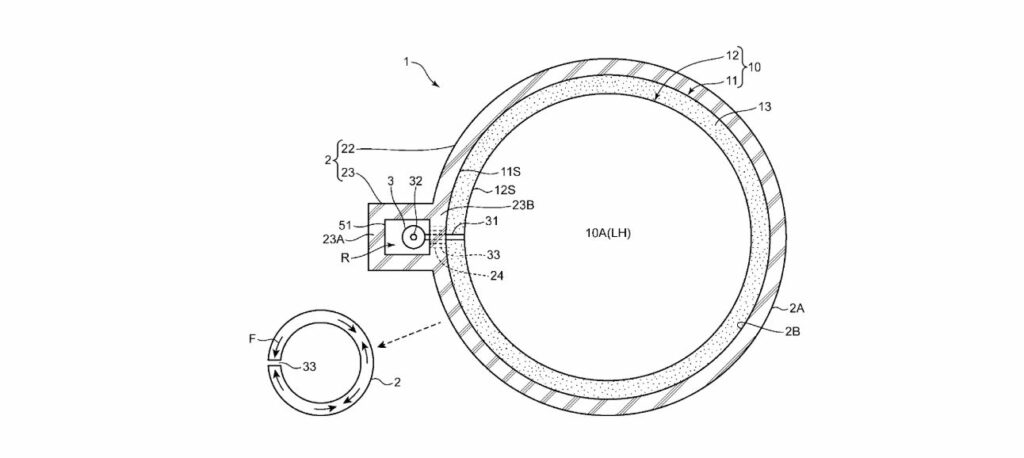Recently, Kawasaki Jukogyo Kabushiki Kaisha has filed a patent for an innovative liquid hydrogen storage tank that promises significant improvements in safety and functionality.
Tank Body Design
The liquid hydrogen storage tank is designed with two fundamental components: an inner tank and an outer tank. The inner tank is specifically designed to store liquid hydrogen, while the outer tank is positioned outside of it, creating a space between them that serves as a cooling layer. This cooling layer is crucial for maintaining the low temperatures required to keep hydrogen in its liquid form, thereby ensuring its stability and reducing the potential for evaporation or loss.
Role of the Liquid Blocking Barrier
One of the notable features of the patented design is the incorporation of a liquid-blocking barrier. This barrier is essentially a concrete structure that is built around the outer tank. Its primary purpose is to enhance safety by containing any potential leaks and preventing the escape of liquid hydrogen into the surrounding environment. The presence of such a physical barrier is a significant step forward in mitigating risks associated with hydrogen storage.
Piping Systems and Reinforcement
The patent also covers the piping infrastructure that facilitates the transfer of liquid hydrogen from the inner tank to the outside world. These pipes run through both the tank body and the liquid blocking barrier, highlighting the complexity of the design. A unique aspect of the piping system is its reinforcement. Given the critical nature of these passageways, the patent outlines a special reinforcement portion designed to bolster the strength of the penetration points where pipes pass through the barriers. This fortification is intended to enhance the overall durability and dependability of the storage tank, ensuring the safe and efficient flow of liquid hydrogen.
Potential Implications and Future Outlook
While the patent represents a technical advancement in hydrogen storage technology, its true significance lies in its potential applications. With improved safety measures and structural integrity, this storage tank could facilitate the broader adoption of hydrogen as a viable energy carrier. As more industries and countries strive to lower carbon emissions and utilize sustainable alternatives, innovations like this could play a vital role in aiding the energy transition.
Kawasaki Jukogyo Kabushiki Kaisha’s recent patent filing for a liquid hydrogen storage tank is an exciting development in the realm of clean energy. By addressing crucial challenges related to hydrogen storage through innovative design and safety measures, this technology could pave the way for more widespread use of hydrogen as a sustainable energy solution. As the world continues to seek out cleaner alternatives, the importance of such pioneering patents cannot be overlooked, even as we remain cautiously optimistic about their real-world applications.
https://patentscope.wipo.int/search/en/detail.jsf?docId=WO2025023004
